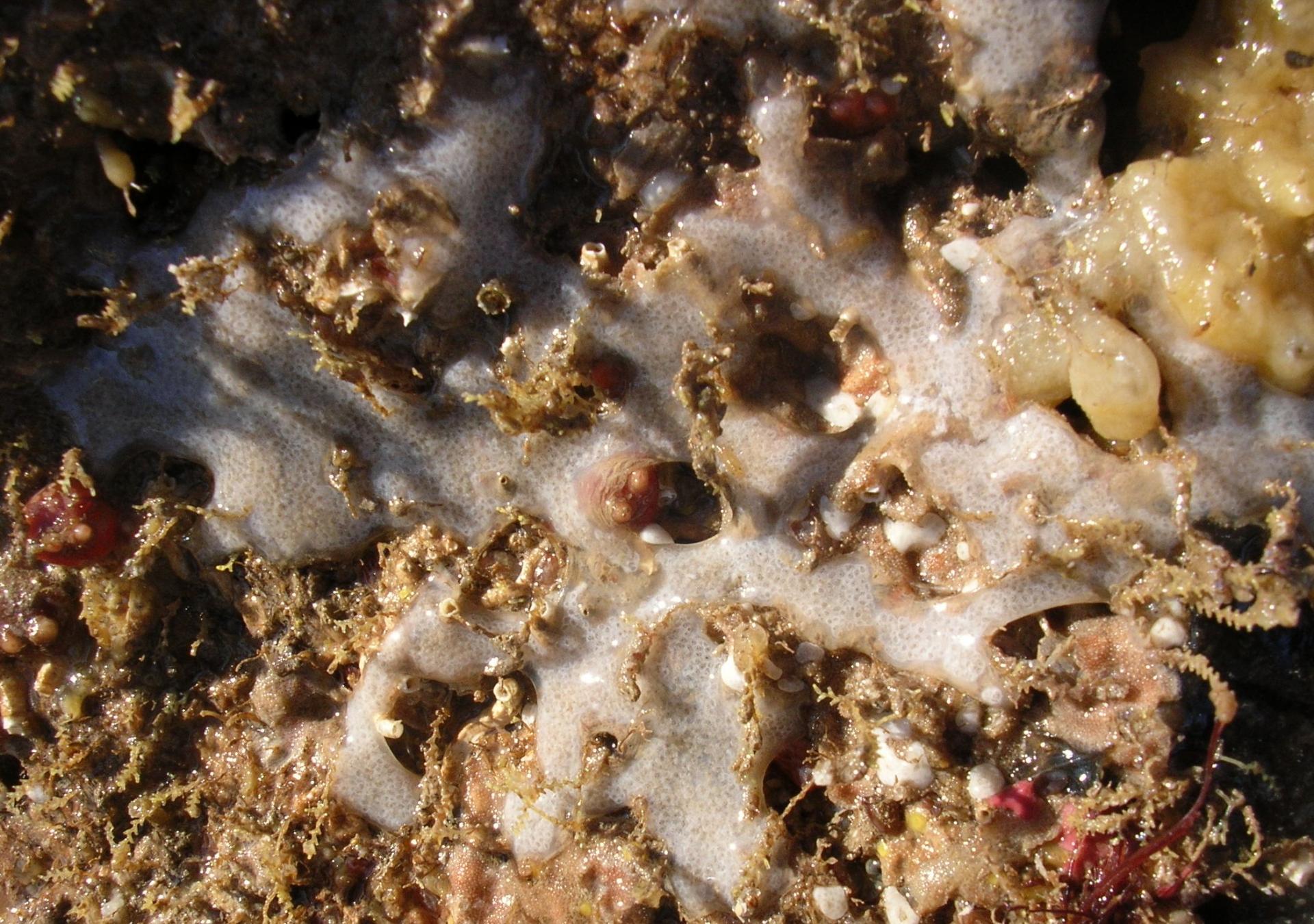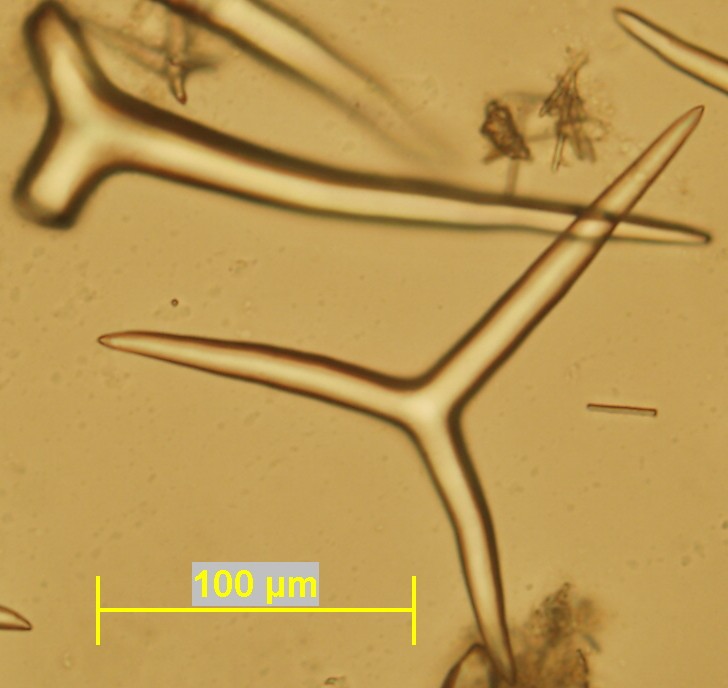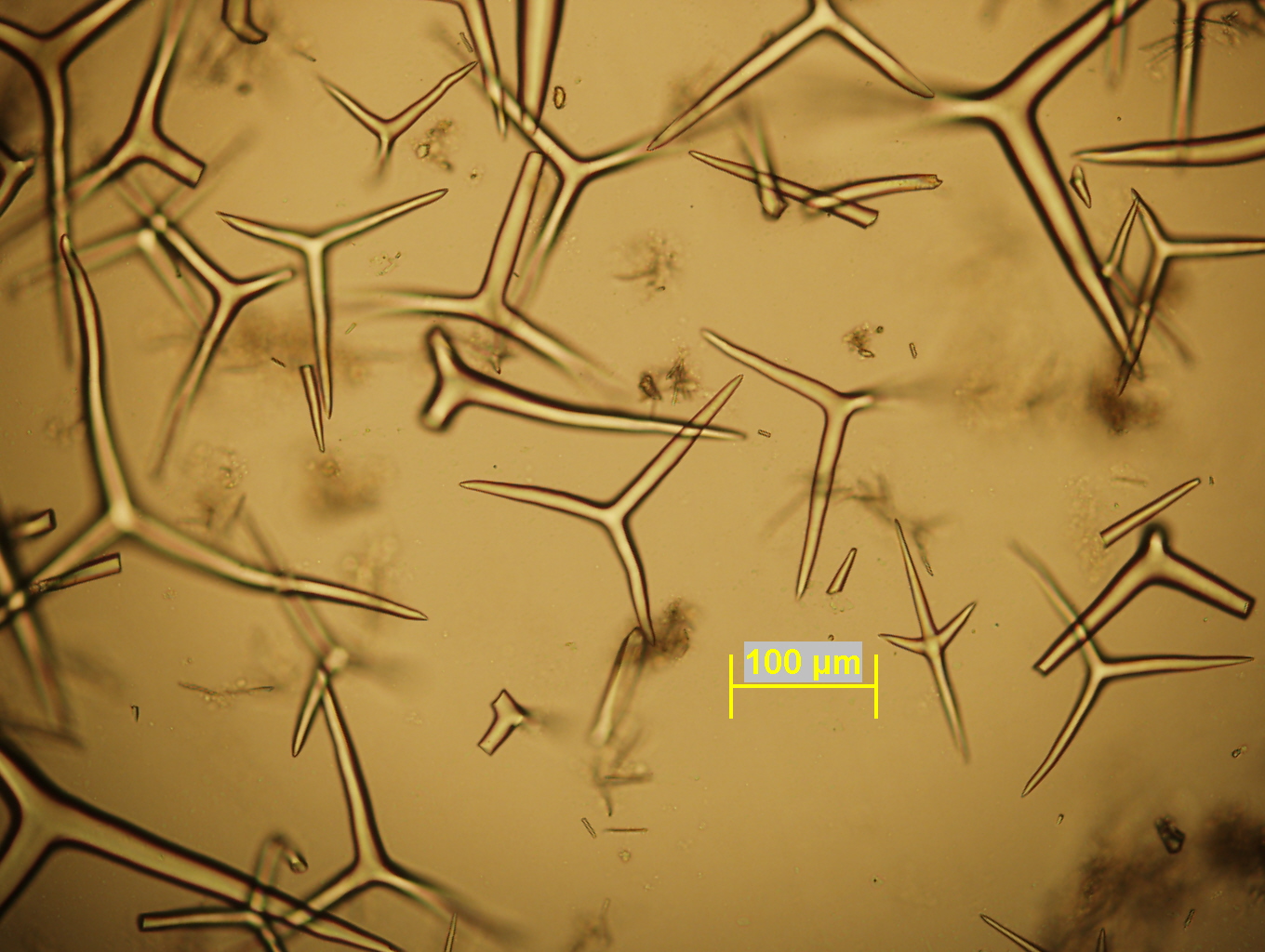Éponge couleur de neige
Porifera, Calcarea, Baerida, Baeriidae
Leuconia nivea (Grant, 1826)
Description :
C’est une petite éponge encroûtante, blanche ou grisâtre avec des lobes ou des crêtes surmontés par des oscules (van Soest et al., 2000 ; Picton et al., 2011).


Formes grisâtre et blanche de l’éponge couleur de neige (Leuconia nivea (Grant, 1826)).
Écologie :
Cette espèce s’observe dans la frange infralittorale là où les mouvements d’eau sont importants, sur les surfaces verticales ou sous les rochers. Elle peut vivre jusqu’à 128 mètres de profondeur (van Soest et al., 2000 ; Picton et al., 2011).
Distribution :
Du Spitzberg à la mer Méditerranée (van Soest et al., 2000).
Spicules :
Ils sont de nature calcaire et de quatre types selon leur taille et leur forme :
- les triactines au niveau du feuillet ectosomal avec des rayons d’environ 120 µm ;
- les triactines de l’atrium ont des rayons de taille variable (50 à 1200 µm) ;
- les microxes de 40 à 60 µm de long ;
- les tetractines de l’endosome ont une paire de rayons d’environ 20 µm et une autre paire d’environ 60 µm de long (van Soest et al., 2000 ; Picton et al., 2011).




Triactines (a et b), microxes (c) et tetractines (d) de l’éponge couleur de neige (Leuconia nivea (Grant, 1826)).
Références bibligraphiques :
Picton, B. E., Morrow, C. C. & van Soest, R. W. B., (2011) in Sponges of Britain and Ireland. (http://www.habitas.org.uk/marinelife/sponge_guide/sponges.asp?item=C3590, 25.08.2011.
van Soest, R. W. M., Picton, B. E. & Morrow, C., (2000) Sponges of the North East Atlantic, in World Biodiversity Database CD-ROM Series, Windows/Mac version 1.0. ( ETI, University of Amsterdam: Amsterdam).
Leuconia nivea (Grant, 1826)
Description:
Sponge white to greyish witch form encrusting sheets to cushions with lobes and ridges (van Soest et al., 2000 ; Picton et al., 2011).
Habitat:
In strong water movement beneath boulders in shallow water and in surge gullies on vertical rock surfaces. Littoral to 128m, on rock (van Soest et al., 2000 ; Picton et al., 2011).
Distribution:
Spitzbergen; Norway; Helgoland; France; Mediterranean (van Soest et al., 2000).
Spicules :
The ectosomal triradiates (a) have rays ca. 120µm long, those of the chamber layer (b) 50-1200µm; microxea (c) are 40-60µm long. The endosomal quadriradiates (d) are sagittal and have paired rays ca. 20µm long and basal ray ca. 60µm (van Soest et al., 2000 ; Picton et al., 2011).
References:
Picton, B. E., Morrow, C. C. & van Soest, R. W. B., (2011) in Sponges of Britain and Ireland. (http://www.habitas.org.uk/marinelife/sponge_guide/sponges.asp?item=C3590, 25.08.2011.
van Soest, R. W. M., Picton, B. E. & Morrow, C., (2000) Sponges of the North East Atlantic, in World Biodiversity Database CD-ROM Series, Windows/Mac version 1.0. ( ETI, University of Amsterdam: Amsterdam).
Date de dernière mise à jour : 02/07/2021




Ajouter un commentaire